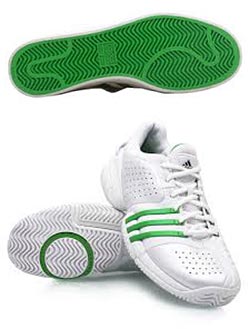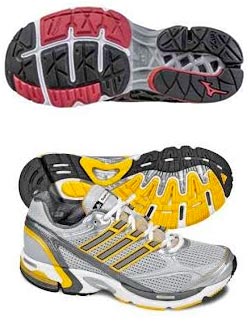GUIDELINES FOR CORRECT FOOTWEAR
Red Porous (En-Tout-Cas and European Clay) Tennis Courts
Please respect the requirements a club may have for correct footwear.
Shoes that are suitable for hard surfaces, synthetic grass and synthetic clay may not be suitable for porous courts. Just because the salesperson in the shoe shop tells you that the shoes are suitable for 'all' surfaces does not mean that they will be suitable for porous courts.
If the shoes you are wearing are not considered appropriate by the club on whose courts you are attending, then you are deemed to be not ready to commence play (as per MEMRLTA by-law 4) and set may be claimed (as per by-law 9a).
Correct footwear for porous courts has a tread pattern giving reasonable grip, but does not damage the playing surface. As well as for the upkeep of court maintenance, correct footwear is vital for player safety.
Suitable Footwear for Porous Tennis Courts
- Shoe soles must not have a raised pattern of any kind.
- Any pattern variation must not exceed 4 mm.
- Soles must be flat (no raised heel) with soft edges.
- Herringbone pattern is the best sole to provide good grip on porous courts.
CORRECT FOOTWEAR

The only acceptable outersole for red porous courts is a herringbone pattern which is usually found on tennis specific shoes and selected cross trainers.
INCORRECT FOOTWEAR

Any shoe outersole which has a lugged pattern is unacceptable on red porous courts as it will chew up and leave marks across the surface, damaging its condition.
A good test to know if your shoes are suitable for porous courts is to rub your hand across the sole of the shoe. If the sole feels round, then it will not be suitable. On the other hand, shoes with no tread (little or no tread) may also be unsuitable as they are prone to excessive slipping and are dangerous.


